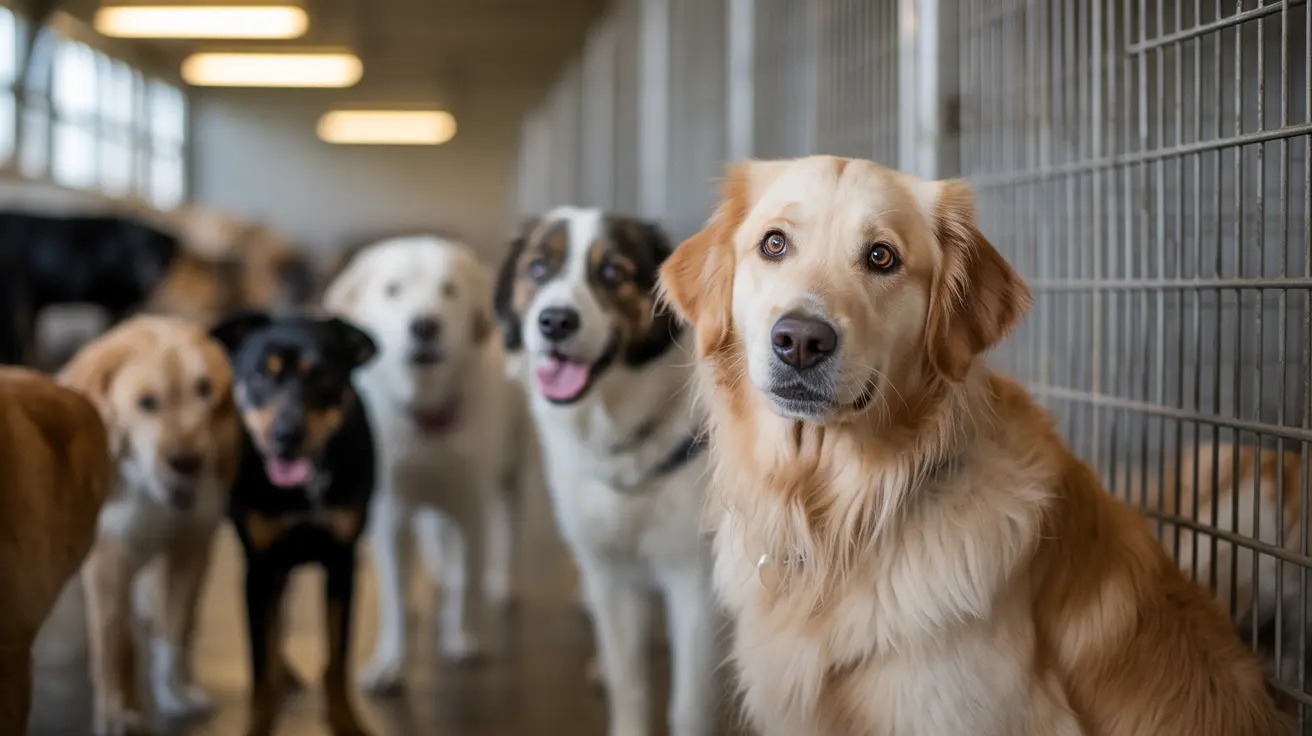Cat Ownership Schizophrenia Risk: Understanding the Latest Research and What It Means for Pet Owners
A groundbreaking Australian study has sparked considerable discussion in both mental health and veterinary communities by suggesting a potential link between cat ownership and increased schizophrenia risk. Published in Schizophrenia Bulletin, this comprehensive systematic review and meta-analysis examined 17 studies from 11 countries spanning over four decades, revealing that individuals exposed to cats may have approximately twice the odds of developing schizophrenia-related disorders compared to those without cat exposure.
While these findings have understandably raised concerns among the millions of cat owners worldwide, it's crucial to understand that this research identifies correlation, not causation. The cat ownership schizophrenia risk connection appears to be mediated by various factors, including potential parasitic infections, with Toxoplasma gondii emerging as the primary suspect. As we explore this complex relationship, it's important to maintain perspective: cat ownership alone does not cause schizophrenia, and proper understanding of the research can help pet owners make informed decisions about their health and their pets' care.
This comprehensive analysis will examine the scientific evidence, explore the biological mechanisms that may underlie this association, and provide practical guidance for current and prospective cat owners who want to minimize any potential risks while continuing to enjoy the companionship of their feline friends.
The Scientific Evidence: What the Research Actually Shows
The meta-analysis that brought the cat ownership schizophrenia risk to public attention analyzed data from studies conducted between January 1, 1980, and May 30, 2023. The research found that individuals exposed to cats had an unadjusted pooled odds ratio of 2.14, which translates to approximately double the risk of developing schizophrenia-related disorders. After statistical adjustments and removal of outliers, this ratio remained significant at 1.56 to 2.44, depending on the specific analysis performed.
The association encompasses various forms of cat exposure, including cat ownership, cat bites, and general cat contact. Particularly noteworthy is research from Saudi Arabia involving 78 patients with schizophrenia compared to control groups. This study found that 52.6% of schizophrenia patients reported cat ownership before age 13, compared to 44.9% of psychiatric controls and 24.4% of non-psychiatric controls. Patients with schizophrenia were 3.4 times more likely than non-psychiatric controls to report childhood cat ownership.
Historical data from the National Alliance for the Mentally Ill (NAMI) surveys conducted in 1982, 1992, and 1997 consistently showed that approximately 50% of families affected by serious mental illness owned cats during childhood, a rate higher than control groups. This longitudinal evidence suggests that childhood cat exposure may be a particularly significant risk factor for later development of schizophrenia or related disorders.
Understanding Toxoplasma gondii: The Primary Biological Mechanism
The protozoan parasite Toxoplasma gondii represents the most compelling biological explanation for the cat ownership schizophrenia risk association. Cats serve as the definitive host for this parasite, meaning T. gondii can only complete its reproductive cycle in the feline intestinal environment. Once infected, cats shed infectious oocysts in their feces, which can persist in the environment and infect humans through various exposure routes.
T. gondii infection has been linked to neurological and psychiatric conditions because the parasite can establish persistent infection in the central nervous system. Once in the brain, T. gondii may affect neurotransmitter function, potentially influencing dopamine pathways that are already disrupted in schizophrenia. Multiple meta-analyses have reported higher T. gondii antibody rates in schizophrenia patients compared to controls, suggesting that past infection may play a role in the disorder's development.
Human exposure to T. gondii can occur through several pathways: direct contact with cats and their litter boxes, exposure to contaminated soil where cats have defecated, or consumption of undercooked meat containing tissue cysts. The parasite's unique lifecycle relies on the feline intestinal environment for reproduction, making cats the primary environmental reservoir for human infection.
Other Zoonotic Factors: Beyond Toxoplasma gondii
While Toxoplasma gondii receives the most attention in cat ownership schizophrenia risk research, other cat-associated pathogens may also contribute to psychiatric symptoms. Bartonella, the bacterium responsible for cat-scratch disease, has been proposed as another potential contributor to schizotypy or psychotic symptoms. This pathogen is transmitted through cat scratches or bites and can cause various neurological complications in some individuals.
Research has also identified Pasteurella multocida, commonly transmitted through cat bites, as another infectious agent that might contribute to psychological effects. The mechanism by which these various pathogens might influence mental health outcomes remains an active area of investigation, but the common thread appears to be their potential to trigger inflammatory responses that could affect brain function.
The complexity of the cat ownership schizophrenia risk relationship becomes apparent when considering that multiple infectious agents, rather than a single pathogen, may contribute to the observed associations. This multifactorial nature underscores why the relationship between cat ownership and schizophrenia risk requires careful scientific investigation rather than simple cause-and-effect conclusions.
Critical Exposure Periods: The Importance of Childhood Contact
Research consistently suggests that the timing of cat exposure may be crucial in determining schizophrenia risk, with childhood exposure appearing to carry greater significance than adult contact. The Saudi Arabian study specifically examined cat ownership before age 13, finding the strongest associations in this early exposure group. Similarly, historical NAMI survey data focused on childhood cat ownership in families affected by mental illness.
The critical nature of childhood exposure may relate to the developing immune system and brain. During childhood, particularly ages 9-12, the brain undergoes significant development, and exposure to infectious agents during this period may have more profound and lasting effects on neurological function. Additionally, children may be more susceptible to infections and less likely to practice the hygiene measures that could prevent pathogen transmission.
Gender differences have also emerged in some studies, with females with schizophrenia reporting higher rates of childhood cat ownership than males in the same group. This finding suggests that biological or behavioral differences between genders might influence susceptibility to cat-associated risk factors, though more research is needed to understand these patterns fully.
The Role of Individual Susceptibility Factors
Understanding cat ownership schizophrenia risk requires acknowledging that schizophrenia is a multifactorial disorder influenced by genetic, environmental, and infectious factors. Individual susceptibility plays a crucial role in determining whether cat exposure translates into increased mental health risk. Family history of psychiatric disorders has been positively associated with both cat ownership and schizophrenia, suggesting that genetic predisposition may amplify environmental risk factors.
Immune system status significantly influences susceptibility to infections that might affect mental health. Immunocompromised individuals and pregnant women face higher risks from Toxoplasma gondii infections, which can cause serious complications beyond potential psychiatric effects. The interaction between genetic vulnerability, immune function, and environmental exposures creates a complex web of risk factors that varies significantly among individuals.
The heterogeneous nature of research findings, with some studies reporting no significant associations while others show strong links, likely reflects these individual differences in susceptibility. This variability emphasizes that cat ownership schizophrenia risk cannot be uniformly applied to all individuals and situations.
Practical Prevention Strategies for Cat Owners
Despite the potential cat ownership schizophrenia risk, millions of people safely share their homes with cats by following appropriate preventive measures. Proper hygiene practices can significantly reduce the risk of zoonotic infections while allowing individuals to maintain the emotional and social benefits of pet ownership.
Daily cleaning of litter boxes represents one of the most important preventive measures, as Toxoplasma gondii oocysts require 24-48 hours to become infectious after being shed. Wearing gloves during litter box maintenance and washing hands thoroughly afterward further reduces exposure risk. Pregnant women and immunocompromised individuals should delegate litter box duties to other household members when possible.
Restricting cats from outdoor hunting can reduce their exposure to infected prey animals, thereby decreasing the likelihood of Toxoplasma gondii infection in the first place. Indoor cats fed commercial diets have significantly lower infection rates than those with outdoor access. Regular veterinary care, including routine health screenings, helps identify and treat infections early, protecting both pet and human health.
Additional protective measures include avoiding feeding cats raw or undercooked meat, maintaining good general hygiene after handling cats, and seeking prompt medical attention for cat bites or scratches. These practices, while simple, can effectively minimize the transmission of various cat-associated pathogens.
Current Research Limitations and Future Directions
While the evidence for cat ownership schizophrenia risk continues to accumulate, current research faces several important limitations that affect interpretation of findings. The heterogeneous nature of study designs, exposure definitions, and outcome measures makes it challenging to draw definitive conclusions about causality. Some studies focus on cat ownership, others on cat contact, and still others on specific infectious exposures, making direct comparisons difficult.
The critical exposure periods for cat-associated risk factors remain poorly defined, with different studies examining various age ranges and exposure durations. This uncertainty makes it challenging to provide specific guidance about when cat exposure might be most problematic or when preventive measures are most crucial.
Prominent research institutions, including the Queensland Centre for Mental Health Research and Johns Hopkins University, continue to investigate these relationships through well-designed longitudinal studies. Future research needs include large-scale prospective studies that can better establish temporal relationships between cat exposure, infections, and mental health outcomes.
The biological mechanisms underlying the cat ownership schizophrenia risk association also require further clarification. While Toxoplasma gondii represents the leading candidate for explaining this relationship, the specific pathways by which the parasite might influence brain function and contribute to psychiatric symptoms need more detailed investigation.
Expert Perspectives and Professional Recommendations
Mental health professionals and veterinarians generally emphasize that the cat ownership schizophrenia risk research should be interpreted cautiously. The observed associations, while statistically significant, do not establish that cats cause schizophrenia. Instead, the findings suggest that certain infectious exposures associated with cats might contribute to the complex constellation of factors that can lead to psychiatric disorders in susceptible individuals.
Professional recommendations focus on harm reduction rather than cat avoidance. Veterinarians stress the importance of regular health screenings for cats, indoor housing when possible, and proper hygiene practices for cat owners. Mental health professionals note that the benefits of pet ownership, including reduced stress, increased social connection, and improved mood, may outweigh potential risks for most individuals when appropriate precautions are taken.
Public health experts emphasize the need for balanced information that allows individuals to make informed decisions about pet ownership. The goal is not to discourage cat ownership but to promote awareness of potential risks and effective prevention strategies that can minimize those risks while preserving the human-animal bond.
Frequently Asked Questions
- Q: Does owning a cat mean I will develop schizophrenia?
A: No, cat ownership does not cause schizophrenia. The research shows a statistical association, meaning cat owners as a group may have slightly higher rates of schizophrenia, but the vast majority of cat owners never develop this condition. Schizophrenia affects about 1% of the population and results from complex interactions between genetic, environmental, and infectious factors. - Q: Should I get rid of my cat based on these research findings?
A: Medical and veterinary experts generally do not recommend removing cats from homes based on current research. Instead, focus on proper hygiene practices such as daily litter box cleaning, hand washing after cat contact, and regular veterinary care. The emotional and social benefits of pet ownership often outweigh the small statistical risks when appropriate precautions are taken. - Q: Are indoor cats safer than outdoor cats regarding infection risk?
A: Yes, indoor cats have significantly lower rates of Toxoplasma gondii infection compared to outdoor cats because they have limited exposure to infected prey animals and contaminated soil. Cats fed commercial diets and kept indoors pose lower transmission risks to their human families. - Q: What is Toxoplasma gondii and how does it potentially affect mental health?
A: Toxoplasma gondii is a protozoan parasite that uses cats as its primary host. When it infects humans, it can establish persistent infection in the central nervous system and potentially affect neurotransmitter function. Some research suggests this may influence brain pathways already disrupted in schizophrenia, though the exact mechanisms remain under investigation. - Q: Who is at highest risk for complications from cat-associated infections?
A: Pregnant women, immunocompromised individuals, and potentially children during critical developmental periods (ages 9-12) may face higher risks. These groups should take extra precautions around cats, including avoiding litter box duties when possible and maintaining strict hygiene practices. - Q: How can I safely own a cat while minimizing infection risks?
A: Key protective measures include cleaning litter boxes daily (oocysts need 24-48 hours to become infectious), wearing gloves during cleaning, washing hands thoroughly after cat contact, keeping cats indoors, feeding commercial diets rather than raw meat, and ensuring regular veterinary care. These simple practices can significantly reduce transmission risks. - Q: Is there ongoing research to better understand this relationship?
A: Yes, major research institutions continue investigating the cat ownership schizophrenia risk association through large-scale longitudinal studies. Future research aims to clarify causal relationships, identify critical exposure periods, and better understand the biological mechanisms that might link cat exposure to mental health outcomes.
Conclusion
The research on cat ownership schizophrenia risk represents an important area of scientific inquiry that highlights the complex relationships between environmental exposures, infectious agents, and mental health outcomes. While the statistical associations identified in recent meta-analyses are noteworthy, they must be understood within the broader context of schizophrenia's multifactorial nature and the limitations of current research methodologies.
For the millions of cat owners worldwide, these findings need not cause undue alarm or necessitate dramatic changes in pet ownership decisions. Instead, they underscore the importance of responsible pet ownership practices that have long been recommended by veterinary professionals: maintaining good hygiene, providing regular veterinary care, and taking appropriate precautions to prevent zoonotic disease transmission. By following these established guidelines, cat owners can continue to enjoy the well-documented emotional and social benefits of pet companionship while minimizing any potential health risks associated with their feline friends.






